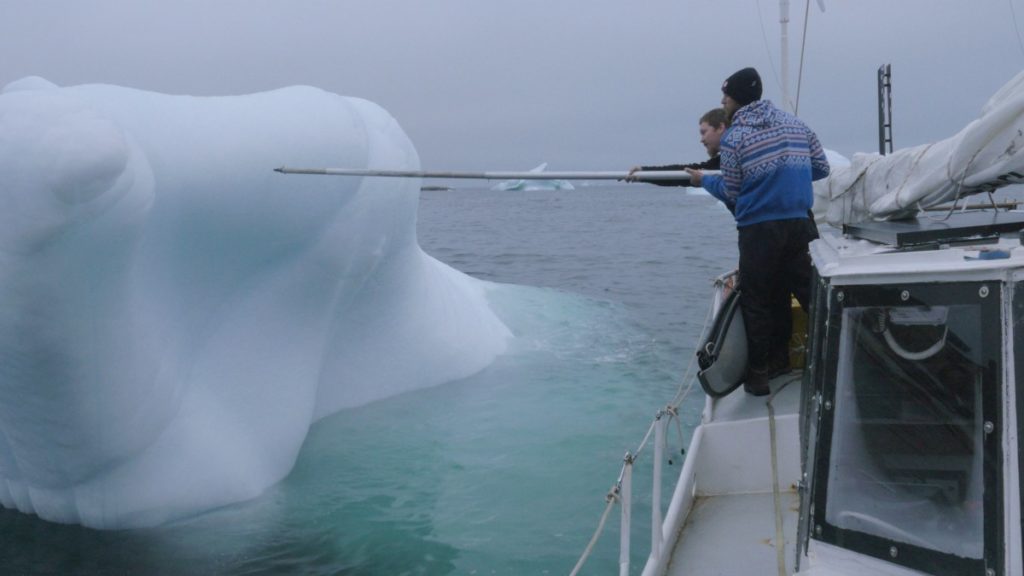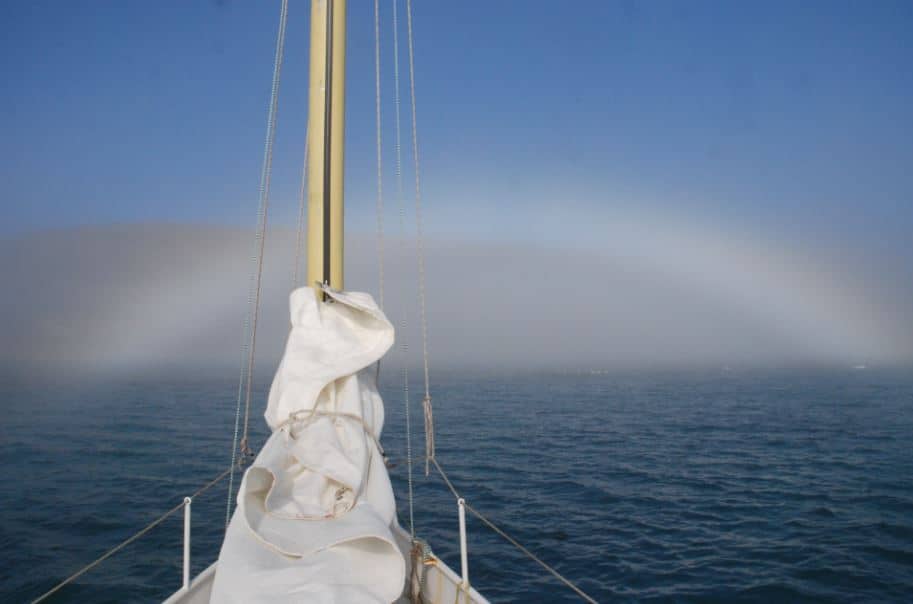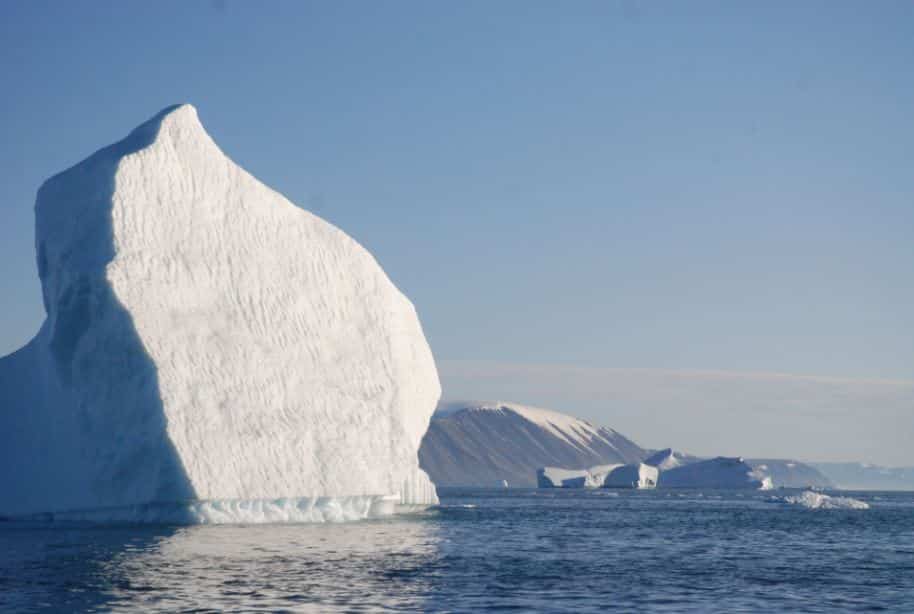
We were only planning on being in Upernavik for 24 hours but things don’t always go as planned. During an expedition of this nature problems are going to occur. It could be anything from something on the boat breaking unexpectedly, scientific equipment malfunctioning, sickness or injury, etc. You prepare for an expedition the best you can and you play it safe as often as possible but unexpected things occur. Then again, it wouldn’t be an adventure if you knew how it was going to end.
Our problem in Upernavik was financial. We were told that we were going to get 5k from one of our partners on July 1st two months before we left. On July 1st instead of receiving the funding we got an email saying “sorry for the inconvenience but we can’t give you the funding until September”. Because of the “shoe string” nature of this year’s expedition this left us tied off to a seawall in the Arctic without the funding to continue. It took four days to pull together the funding which involved a series of phone calls, some more painful than others. Lynker Technologies also kicked in more funding which helped the situation. Once we had filled in the gap in our funding we could push off the dock and begin our micro plastics survey in Baffin Bay.
Our micro plastics survey in Baffin Bay would involve a 500 mile offshore passage. I wanted to make sure that everyone was well rested before we left so we prepared the vessel and went to bed early. Just as I was starting to fall asleep I heard a thumping noise coming from somewhere deep on our boat. Upernavik harbor has a good deal of ice in it and it isn’t uncommon for a chunk of ice the size of a vending machine to float by bouncing off the hull as it passes, but this was different. I came out into the pilothouse and to my surprise there was a large berg a few feet from our haul. It was high tide which allowed a large berg that would typically run aground at the mouth of the harbor to come drifting in. It was an oddly shaped iceberg that had an underwater ice shelf protruding a good 20 feet. This underwater shelf was under our boat and bouncing off the bottom of our keel. The fear was that if this roughly 50 ton berg decided to roll it would lift the boat in the process. Although we were tied off, it still would have been bad. I yelled for the crew and everyone came scrambling out in socks and bare feet grabbing poles and attempting to push away this large chunk of ice. For the first five minutes it seemed like an impossible task but finally the berg slowly started to move away from the boat.
The berg drifted 100 feet and ran aground. I couldn’t go back to bed because we had another large berg approaching from behind that may or may not come crashing into our stern. After 3 hours the tide went out enough that all the large icebergs in the harbor were safely aground so I tried to get back to sleep. Just as I was nodding off I heard a loud crashing sound. The berg that was bouncing off our keel had broken apart with enough force to send a chunk of ice the size of an SUV careening through the water at a good 5kts passing right behind our vessel. The berg had broken into 1,000 pieces, several hundred of which had surrounded Ault and as we bounced up and down with the swell the small pieces of ice hit our steel hull making it sound like we were in a kettle drum. It’s hard to sleep through that!

After a sleepless night we pushed out into Baffin Bay. I knew it would be a relatively easy offshore run as our weather forecast showed very light winds for the entire passage.
In 2013 we spent 70 days at sea doing micro plastics research in the so called “Atlantic Garbage Patch”. We spent 64 days doing micro plastics research in the Pacific in 2014. Last year we did some micro plastics trawls off Disko Island. This year it made sense it do trawls further offshore in the middle of Baffin Bay. We don’t get any funding for this research, understanding how plastic trash is effecting our oceans has become a pet project of ours. We will continue to collect micro plastics data on all future expeditions as plastic trash is a big problem for our oceans.
It’s difficult to do this type off data collection in the Arctic because unlike the open ocean you have a lot of various things floating on the surface. Last year we kept getting nets full of jelly fish and feathers. This year we kept filling our trawl with zoo plankton. It’s awfully difficult to find small pieces of plastics when they are hidden in five gallons of plankton. It’s no surprise that we found so much plankton in the middle of Baffin Bay; the plankton is the reason why so many whales come up here.
No one has done trawls in the Arctic before and after the last two years I think we are starting to come to a basic conclusion. Plastic trash (micro plastics) float on the surface of the water. The ice that forms on the surface prevents micro plastics from getting too far north during at least the six to nine months of the year that it’s present. The micro plastics that do come up from the Atlantic becomes locked in the ice and gets pushed south with the pack ice as it melts. This means that the ice acts as a barrier in the winter and pushes the micro plastics that do accumulate in the gyre out in the spring. To take this research to the next level we would have to take ice samples in the winter to see how much micro plastics are getting trapped within it.
After sailing through Baffin Bay we turned towards our destination; Qaanaaq in Inglefield fjord. This is where we will be mapping the seafloor and lowering a CTD probe for NASA’s OMG program. We were a bit early in the season so when we arrived in Inglefield fjord it was still half full of pack ice floating around at random. We pushed our way through large patties of rotten pack ice roughly six inches thick, ramming them with our bow and breaking them in half. Finally we arrived at Qaanaaq; we dropped the anchor surrounded by heavy fog, refueled and began our hydrographic survey.

Fortitudine Vincinimus
–Matt Rutherford








